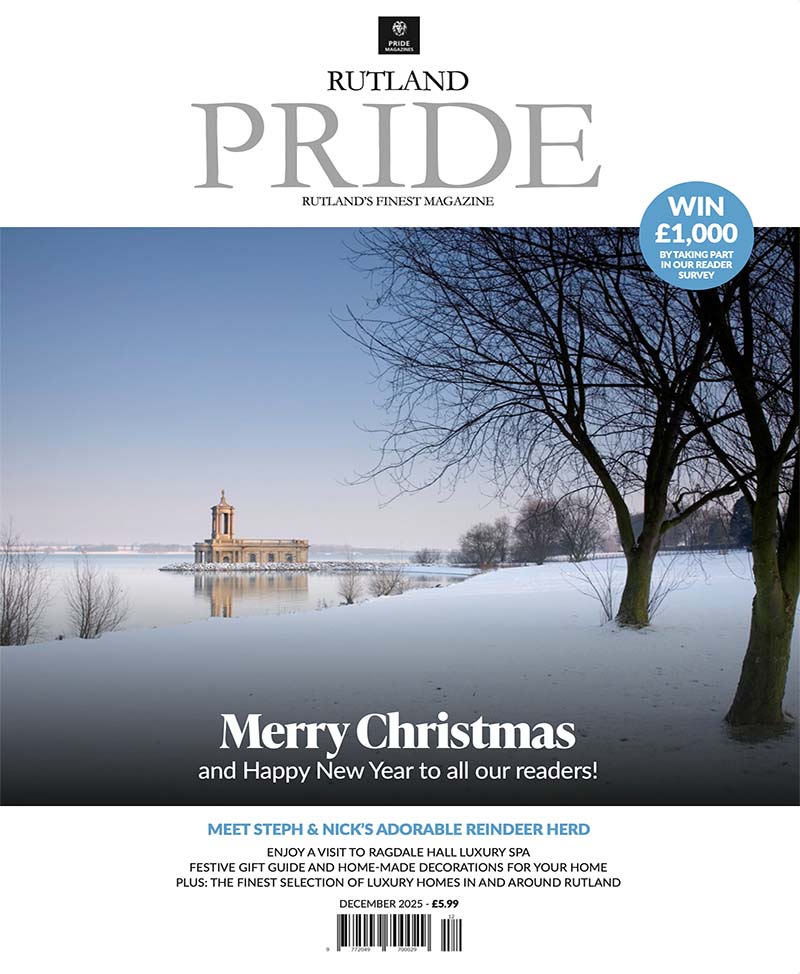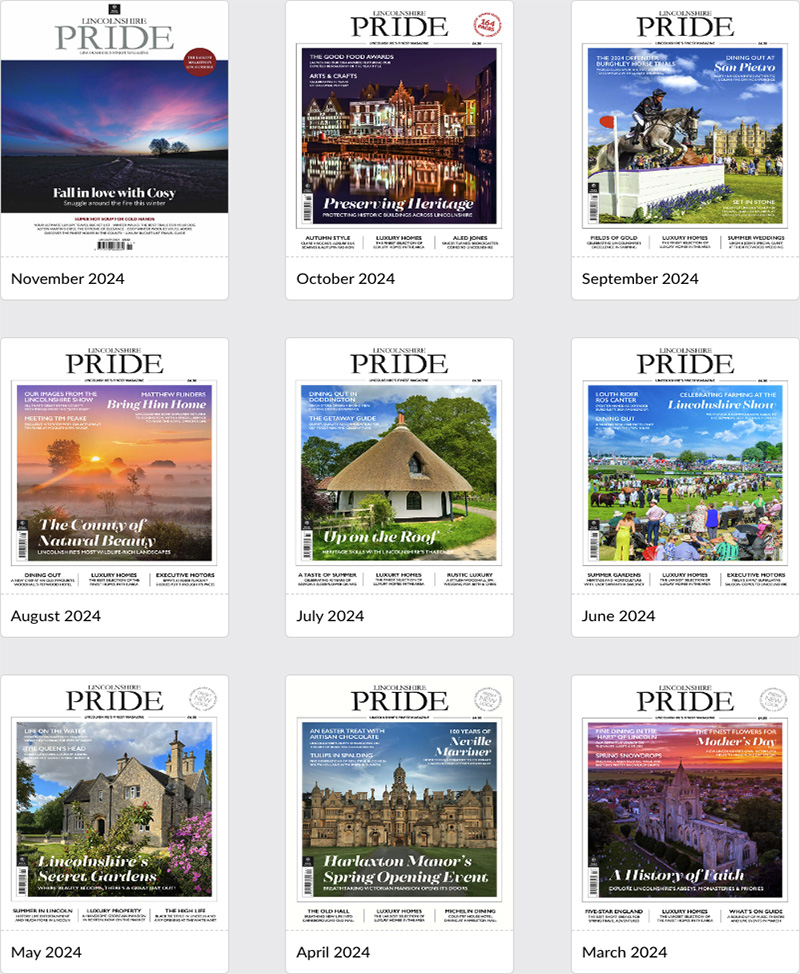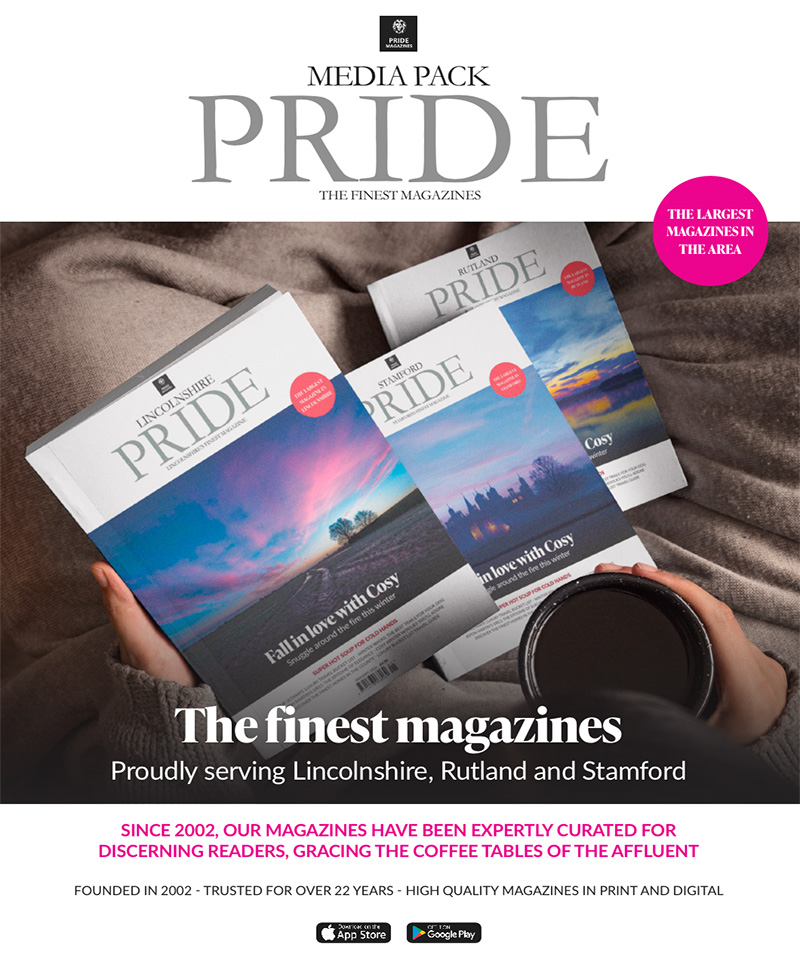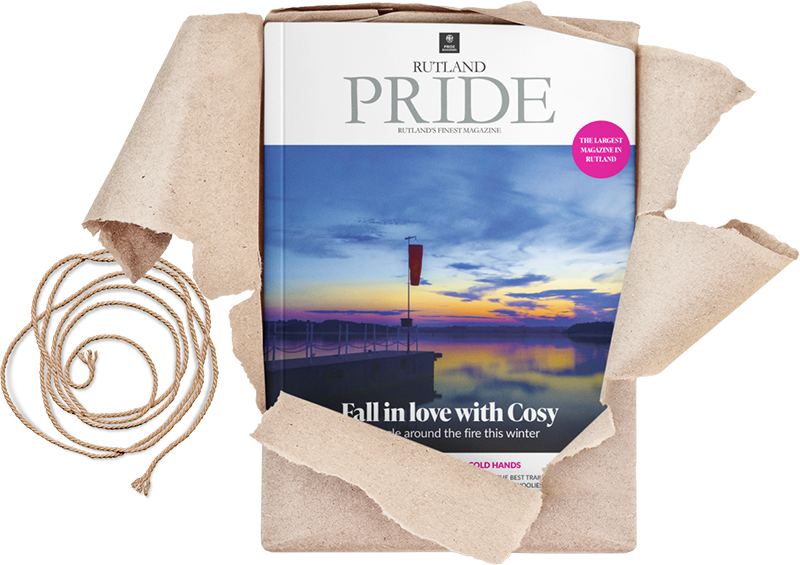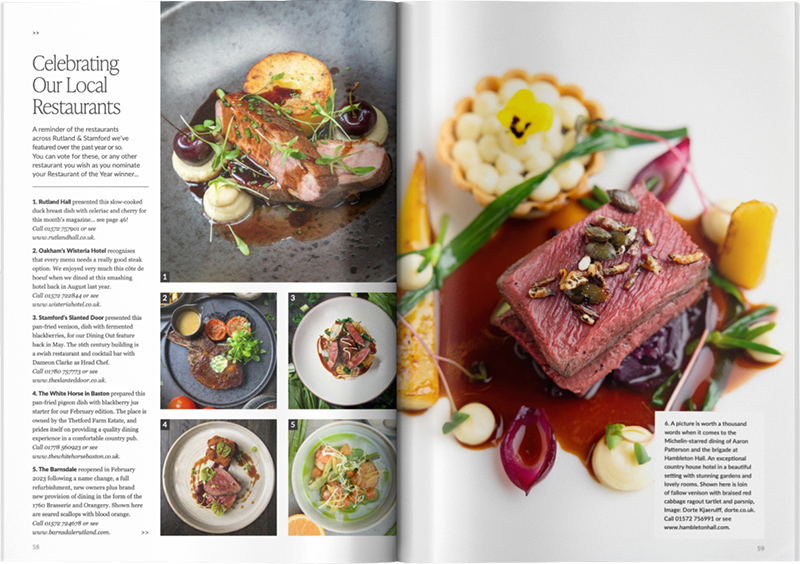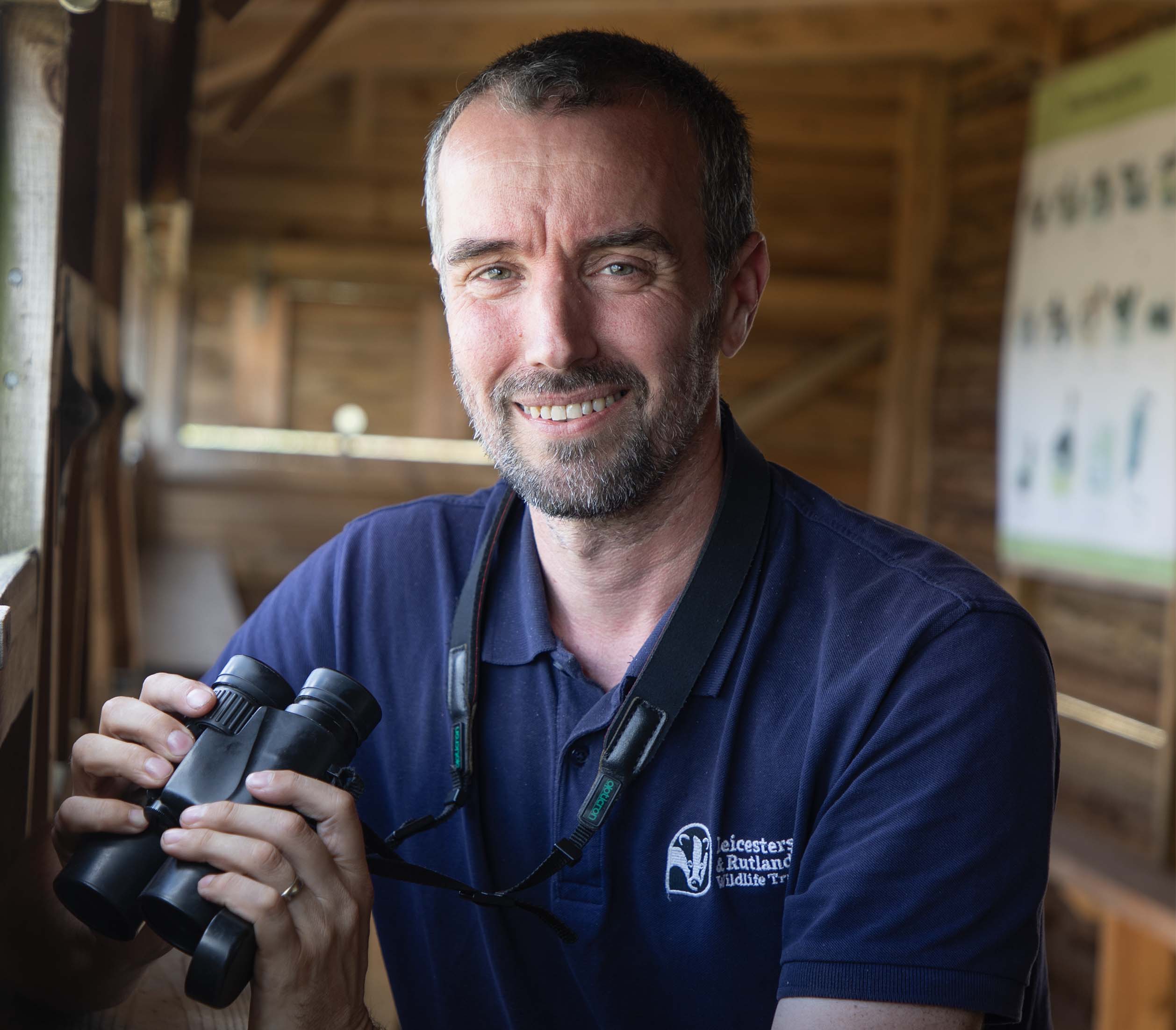
Wildlife in Rutland
Next year will mark some significant milestones for those involved in conservation in Rutland. The Leicestershire & Rutland Wildlife Trust will mark its 70th anniversary; Rutland Water Nature Reserve itself will celebrate 50 years and the Rutland Osprey Project will marks its 30th year too. So, what does the future of wildlife in Rutland hold? There’s nobody better to ask than Senior Species Recording Officer at Rutland Water, Tim Sexton
When you call the villages and market towns around Rutland Water home sweet home, it’s easy to become laissez-faire about just what a unique place it is to live and work. Managed as a partnership between Anglian Water and the Leicestershire and Rutland Wildlife Trust, Rutland Water will celebrate its 50th year as a reserve, whilst the Wildlife Trust will mark seven decades since it was founded. Meanwhile, the reserve’s Rutland Osprey Project will celebrate its own milestone, recognising its 30th anniversary.
You’d be forgiven for thinking that the land around Rutland Water is wild and therefore takes care of itself. On the contrary, says Tim Sexton who serves as Rutland Water Nature Reserve’s Senior Species and Recording Officer, alongside colleague Beth Fox.
“Rewilding has become a popular expression recently, and it refers to ecological restoration that allows nature to reassert itself. But by virtue of the fact that Rutland Water is largely man-made and because it’s important infrastructure for the whole region, we have to manage the area as appropriate, and monitor and manage species.”
The Leicestershire and Rutland Wildlife Trust comprises 35 Nature Reserves covering over 1,200 hectares, of which Rutland Water is just one. However, its scale and unique biodiversity set it apart, which is why the Trust has seven members of staff and over 300 volunteers to help it there. It’s also the reason that accurate information – such as data from Tim and Beth’s monitoring work – helps to inform and guide the Trust’s management of its sites.
“Everything is linked to everything else in conservation,” says Tim “There are so many species which are reliant on other species. It’s a good thing to be a generalist in conservation because although the site may be best known for its wetland birds, it is the aquatic invertebrates, fish, flora and wetland plants which also play an important role in achieving the balance across the Reserve.”
Humans are another factor. The original purpose of the reservoir – to store and abstract water – remains essential, but Tim also believes strongly that the original intent to make available the reservoir and to keep the reserve open for people to enjoy recreationally (including experiencing the natural world) is equally sacrosanct.
For that to happen in the future, constant management to ensure good habitats in which wildlife can thrive and the constant monitoring of changes – local, national and international trends – is crucial.
“We’ve three volunteer work days – on a Tuesday, Wednesday and Thursday – for when we need to manage an area of the reserve,” says Tim, “And our survey and monitoring volunteers help us to provide data which will identify long-term trends in the future, comparing it with our legacy data. We also use that data to inform our management.”
“Back in 1975 when the reservoir was being filled, Tim Appleton (the Reserve Manager at the time) had the foresight to not only do a monthly wetland bird count, but to separate out individual areas of the reservoir, which we still use today.”
“Some of our wetland bird survey volunteers have been with us for 10 or 20 years, and when I first took on this job four years ago, one of my earliest tasks was to take hand-written records and computerised records – albeit Lotus 123 spreadsheets on floppy disks – and to incorporate them into our current format. That means we’ve really comprehensive recordings of wetland bird numbers which are among the most meticulous in the country – spanning 50 years!”
The advent of computerised records has also enabled Tim and the team to analyse long-term data and feed their data into national records. On one Sunday each month, Tim and 20-ish volunteers conduct their count, with each volunteer taking an area of the reservoir. The team counts the different species of wetland birds across a two hour window, keeping in touch with each other using WhatsApp (you’d think they’d use Twitter), to avoid duplication.
The information is fed into the national WEBS (Wetland Bird Survey) database, which is coordinated by The British Trust for Ornithology, to build up a national picture of the prevalence of species.
Locally, wildlife counts are also uploaded into Nature Spot, a publicly accessible website where anyone can discover, identify and record locally the different species of birds, insects mammals, wildflowers, trees, even fungi, algae and lichens.
Such information helps conservationists to consider other factors that may have an impact on wildlife. From farming practices to the existential effects of climate change to population growth and a corresponding increase in the amount of water we consume, Tim, Beth and the Trust’s volunteers can spot problems in the way we impact local wildlife.
“Quagga mussels, for instance, were first detected here around 2020,” says Tim. “As we’ve brought cargo into Britain via the Thames or Humber for example, they’ve gradually made their way through our water courses and have eventually ended up in Rutland Water.”
“They’re an example of an invasive species and can now block pipes because of their numbers, so Anglian Water is having to clean them out of their pipework infrastructure. They’re also very effective filter feeders and can filter 1,000 litres a day per square metre of mussels… and you might think that’s great; clear water. But not necessarily.”
“Rutland Water has always been a eutrophic lake, and clear water allows light to penetrate and weed to grow. The fishermen who use the reservoir will then tell you that it’s more difficult to fish in a weedy reservoir, and trout are opportunistic carnivores feeding on insects, so their ability to feed themselves is compromised. In turn, when weed starts to break down, the release of nutrients from that process allows blue-green algae to bloom.”
“Meanwhile, quagga mussels have managed to outcompete Zebra Mussels in the Reservoir, which were a popular food source for tufted duck. As Quaggas prefer deeper water, out of the reach of diving ducks, their arrival has correlated with a lower number of Tufted Duck in recent years.”
“Not all recent arrivals are bad news. Along with internationally important populations of ducks, a recent study has identified over 600 species of beetle at Rutland Water including many scarce wetland specialists that wouldn’t have been found here 50 years ago. One such species, macroplea mutica (discovered earlier this spring), is Nationally Rare and represents the first record of this species in the East Midlands since 1818.”
“One of our volunteers has also identified no fewer than 650 different species of moth in just one area of the reserve since records first began. And that’s the beauty of our community, we’ve volunteers with different interests, all contributing to producing information that’s formally organised, formally structured and standardised in the way that it’s presented, which is available for long-term analysis.”
“These ‘boots on the ground’ make a huge amount of difference not just to the way the reserve is presented in the respect of the great maintenance that the work parties undertake, but in the knowledge and records that we can keep and the depth of information that we have as a result which informs our conservation operations.”
The Wildlife Trust’s work feeds into larger considerations like observing the positive impact on decarbonising, or more sustainable farming practices. “Farmers understand that their profession relies on pollinators as much as it relies on machinery or agronomy.” Farming is only going to cost more if we have to assist in the pollination of our crops because of a decline in bee or butterfly populations.”
“We’re now much more sensitive to the fact that we need to look after the countryside and to be aware of the impact that our decisions make. As a good scientist you should never stop asking questions, and never be reluctant to consider what’s happening here relative to the bigger picture.”
“And above all, it’s good to recognise that the conservation of wildlife is a wonderful thing. It’s the answer to so many of the problems that we face as a society, it’s been widely proven in studies that conservation work and being out in the countryside can make a huge amount of difference to your physical and mental health.”
“Visiting the reserve is something I’m a huge advocate of, I really do enjoy being here, and in 25 years’ time, I can’t wait to see how the data that we collect today and the contribution of our volunteers has made a difference to the future of our very unique habitats.”
Leicester & Rutland Wildlife Trust
Becoming a member of the Leicestershire & Rutland Wildlife Trust is one of the most meaningful ways to support local conservation, and with Christmas approaching, what could be more thoughtful than giving the gift of nature? Membership is available at several levels, with Individual or Joint Membership and family memberships available from £5 a month. Members enjoy a welcome pack featuring a guide to all 35 LRWT nature reserves, the WILD Leicestershire & Rutland magazine three times a year, regular newsletters, and a generous discount on entry to the Rutland Water Nature Reserve. Families additionally receive Wildlife Watch magazine for children and invitations to special events. An annual membership also makes a charming Christmas gift, offering the joy of wildlife year-round.
Find out more at www.lrwt.org.uk/join or call 0116 262 9968.
Wild Rutland
Wild Rutland is a forthcoming conservation-led, eco-tourism destination, nestled in 1,000 acres of Rutland countryside. It will offer a one-of-a-kind opportunity for visitors to experience nature first hand, protecting the ancient woodland, historic parkland…
What is Wild Rutland?
Wild Rutland is a place for everyone who wants to learn about, support and be close to nature. It will welcome visitors to Rutland and local people to enjoy nature in a way which not only protects the environment but works to create significant habitat improvements and creation. Having been responsible for the upkeep and conservation of the ancient woodland and historic parkland, today we continue to encourage biodiversity through exemplary land and wildlife management incorporating both traditional and cutting-edge methods. Conserving, and working to support our environment is of utmost importance to Wild Rutland. We are the custodians of this ancient woodland and historic parkland, Wild Rutland will allow us to take the ambitions of the Hanbury family and the statutory bodies for these critical habitats forward in a way that current funding methods do not permit.
Where will it be located?
Wild Rutland is proud of its home in the beautiful county of Rutland. The project has been proposed on the outskirts of Oakham, Rutland. Close to Rutland Water, the site, which is currently private land, will include 1,000 acres of ancient woodland and historic parkland.
Who’s involved?
Wild Rutland is a new independent project, entirely on private land and whilst complementary, not linked to the Wildlife Trust or Anglian Water. The project is being delivered by two generations of the Hanbury Family, farmers and residents of Burley for hundreds of years, supported by Hugh Vere Nicoll, CEO of Wild Rutland.
What will the site look and like and what facilities will it offer?
The unique site will offer visitors the opportunity for recreation, adventure, and education, complementing what the county and neighbouring tourism destinations have to offer. Visitors will be able to explore areas of the ancient woodlands by foot and experience nature in a way that compliments the conservation of the historic site. Education is a vital part of Wild Rutland, not just to help people understand more about the historical and ecological elements of the site but about how their actions can impact the natural world. Our aim is to create a safe environment for people to see and learn about ancient woodlands, grasslands and indigenous species. Wild Rutland will also be a place for play and exploration with an expansive adventure playground for children and their parents and a high ropes course for those wanting to see nature from a new angle. Our plans are still evolving and we’re in consultation with conservation experts and the local community. Our planning application for the site will be submitted this autumn so watch this space.
How will it contribute to the area?
Whilst conservation, improving biodiversity and restoration of the historic Humphry Repton influenced parkland will be at the core of Wild Rutland’s aims, tourism will also be a factor that will bring economic benefit to the town and wider county. Wild Rutland will add to Rutland’s impressive reputation as an eco-tourist destination, and support Rutland council’s renewed focus on building tourism while still ensuring that the local wildlife can thrive. Wild Rutland will be a good resource for the local community. Our leisure facilities will bring new activities – such as restaurants, indoor and outdoor adventure play, education, exhibitions and venues – for local residents to enjoy with their family and friends in a unique setting.
When will the project come to fruition?
We are still working on the planning application which will be submitted to Rutland County Council by the end of the year. We are still in consultation with the local community and conservation experts to ensure that our plans reflect the best approach to environmental and historic conservation now and in the future.
What else will be happening on the site?
While we’re working on the planning application, we are running a series of tours and workshops, led by experts in their fields, giving people exclusive access to the ancient woodland.
Find out more about Wild Rutland and our upcoming events at www.wildrutland.com.
Enjoy our full feature in the November edition of Rutland Pride at https://www.pridemagazines.co.uk/rutland/view-magazines?magazine=November-2025


